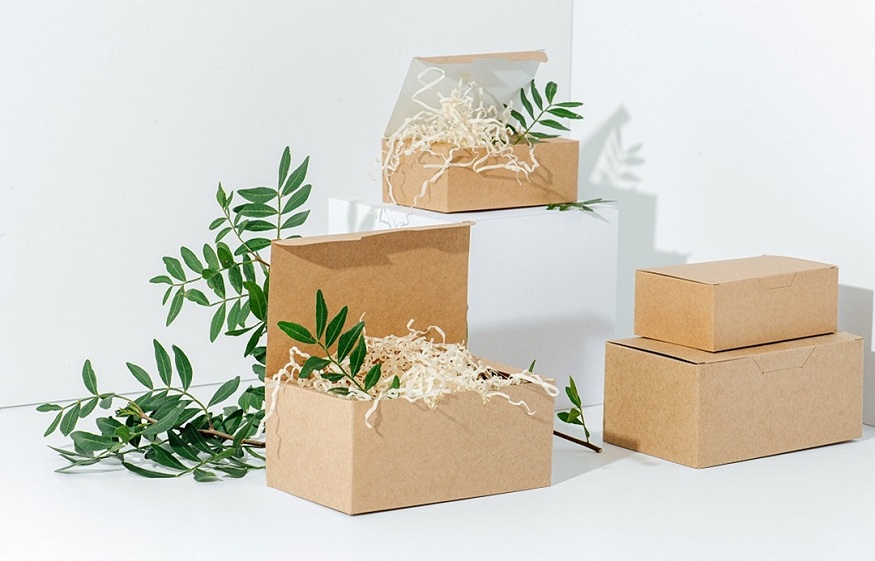In a generation characterized by heightened environmental recognition, the packaging panorama is the present process of a profound transformation. The escalating concerns surrounding plastic pollution, carbon emissions, and ecological repercussions have sparked an urgent need for industries to explore sustainable options. among those alternatives, food paper boxes have emerged as a promising solution that amalgamates comfort, capability, and eco-friendliness. This article delves comprehensively into the ascendancy of a food paper box inside the domain of sustainable packaging, elucidating their multifaceted benefits, the difficult demanding situations they pose, and the overarching impact they exert on the surroundings and the packaging enterprise at big.
The Imperative for Sustainable Packaging
The traditional reliance on single-use plastic packaging has prompted an international ecological crisis of unprecedented value. The negative ramifications of plastic packaging, ranging from the infection of oceans and water our bodies to the detriment of marine existence, are deeply ingrained in public focus. consequently, there exists an escalating impetus to transition towards packaging answers that inflict minimum ecological damage.
At this juncture enters the notion of food paper boxes – a trailblazing technique that resonates harmoniously with the tenets of the round financial system. these bins are meticulously crafted from renewable assets consisting of paper, cardboard, and in pick times, bio-primarily based or compostable substances. The fundamental precept is to engineer packaging that is not handiest utilitarian and visually appealing but also inherently amenable to recycling or biodegradation.
The Advantages of Food Paper Boxes
1. Eco-Friendly Material:
The quintessential advantage of food paper boxes emanates from the foundational materials they are composed of. Paper and cardboard, constituents derived from organic and replenishable sources, occupy a prominent space in sustainable packaging. Unlike their plastic counterparts, which originate from non-renewable fossil fuels and languish for centuries in the environment, paper-based materials are characterized by comparatively swift decomposition within natural settings.
2. Recyclability and Biodegradability:
Central to the allure of food paper boxes is their design with a deliberate focus on recyclability or biodegradability. These attributes substantiate their potential to contribute significantly to the diminution of waste accumulation. Proper disposal practices culminate in the recycling of these boxes into fresh paper products or their integration into compost heaps, wherein they metamorphose into nutrient-rich soil amendments, transcending their legacy as pollutants.
3. Customizability:
The realm of food paper boxes boasts a salient feature in the form of customizability, which is instrumental in catering to the branding and marketing aspirations of diverse businesses. The array of dimensions, shapes, printing designs, and branding options facilitates creative expression whilst preserving allegiance to sustainable paradigms. This versatility serves as a testament to the compatibility between aesthetics and ecological responsibility.
4. Insulation and Protection:
In the dynamic realm of food packaging, functionality reigns supreme. Food paper boxes excel in this domain according to their paramount significance to the insulation and protection of their contents. Whether safeguarding hot or cold items, these boxes are engineered to uphold the desired temperature and thwart leaks, thereby safeguarding the quality and edibility of the enclosed sustenance.
5. Consumer Perception:
In an era characterized by heightened environmental consciousness, consumer sentiment is markedly influenced by ecological considerations. Food packing container that embodies sustainability not only resonates harmoniously with consumers but also engenders brand loyalty. The conscious alignment with ethical principles translates into brand credibility, thereby fostering enduring relationships between brands and consumers.
Challenges and Considerations
However, the embrace of food paper boxes within the ecosystem of sustainable packaging is not devoid of challenges that necessitate meticulous navigation.
1. Resource Intensity:
The production of paper-based materials, albeit sustainable in essence, necessitates the judicious allocation of resources such as water and energy. The attainment of equilibrium between the sustainable sourcing of these resources and their judicious utilization during manufacturing represents a formidable hurdle.
2. Durability and Functionality:
Comparatively, food paper boxes may encounter limitations in terms of durability and functionality when juxtaposed with their plastic counterparts. The reconciliation of enhanced durability while preserving their eco-friendliness constitutes a critical challenge, necessitating a fusion of ingenuity and technology.
3. Supply Chain Complexities:
The transition towards sustainable packaging entails an intricate web of adjustments across the supply chain. From the procurement of appropriate materials to the establishment of novel manufacturing processes and the stringent assurance of product quality, every facet demands meticulous planning, concerted investments, and collaborative endeavors.
4. Consumer Education:
The effective assimilation of food paper boxes necessitates a concerted focus on consumer education. The dissemination of information pertaining to correct disposal procedures and recycling methodologies is indispensable to maximize the ecological dividends rendered by these boxes.
The Larger Impact
The trajectory traced by the ascendancy of food paper boxes within the realm of sustainable packaging transcends a mere substitution of plastic with a more ecologically harmonious alternative. Rather, it signifies an integral fragment of a broader movement that exerts a transformative influence on consumer behavior and industry dynamics alike. The proliferation of companies embracing sustainable packaging epitomizes a decisive step towards the curtailment of the demand for finite resources and the attenuation of the environmental repercussions stemming from anthropogenic activities.
In embracing the principles of the circular economy, food paper boxes confer a prolonged lease of life upon materials, engendering a reduction in waste generation and obviating the incessant production of new packaging. Furthermore, their widespread adoption stimulates the confluence of material science and packaging design innovation, catalyzing the evolution of packaging solutions that are even more synergistic with ecological preservation.
The Way Forward
The trajectory of the eco-friendly food packaging industry inexorably veers towards a more sustainable tomorrow, and food paper boxes are emblematic of the vanguard driving this metamorphosis. As the discerning consumer populace gravitates towards products that mirror their environmental ethos, businesses are presented with an avenue to innovate whilst simultaneously setting an illustrative precedent.
To harness the maximum potential of food paper boxes, a holistic approach is a sine qua non i.e. something that is extremely important and necessary. This entails fervent investment in research and development, oriented towards enhancing material durability. Similarly, the optimization of supply chains to balance efficiency with environmental considerations is a cardinal imperative. Furthermore, the paramount significance of educating consumers about the nuances of responsible disposal and recycling cannot be overstated.
The ascent of food paper boxes within the social environment of sustainable packaging not only heralds the elevation of conscientious consumption and production paradigms but also inscribes an unequivocal commitment to the ecological integrity of the planet. Through meticulous deliberation, judicious investment, and harmonious cooperation, the packaging industry charts a course toward a verdant and sustainable future.

